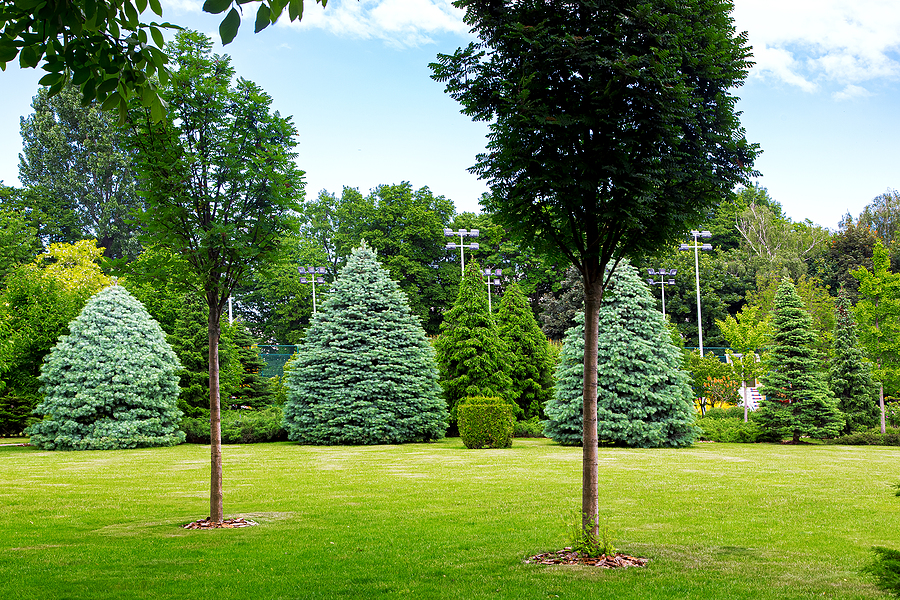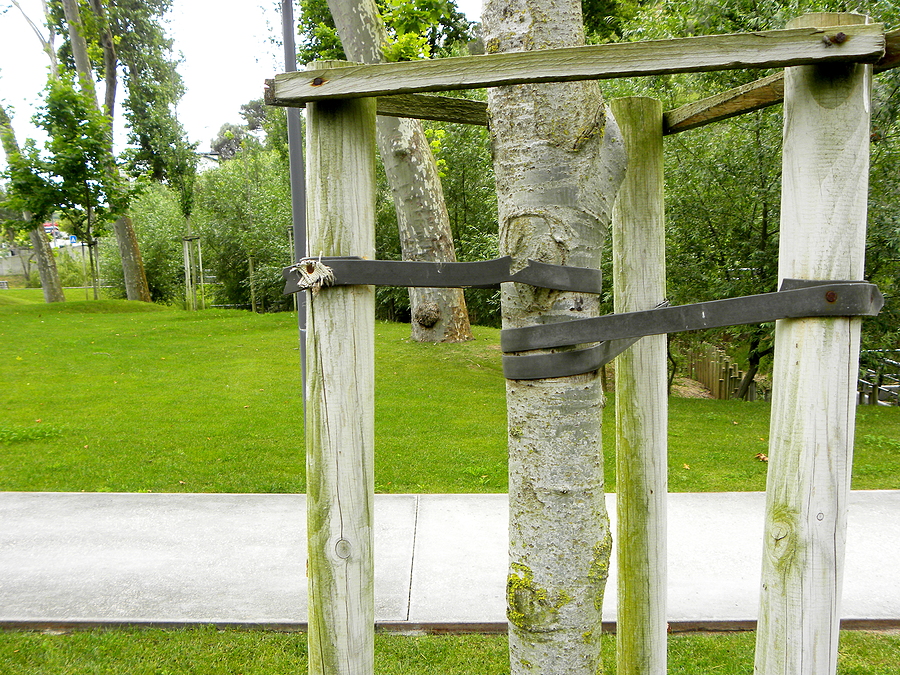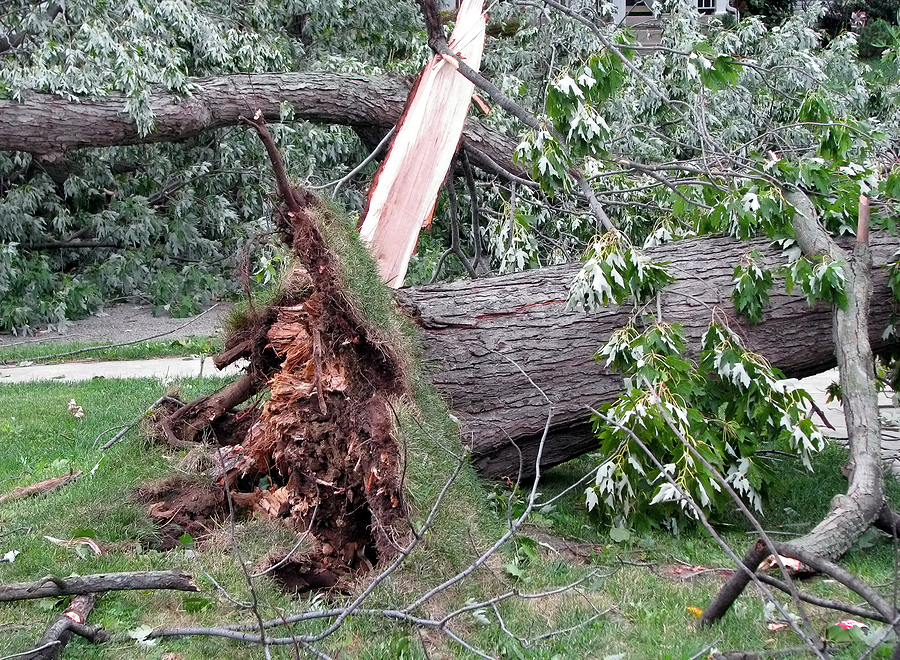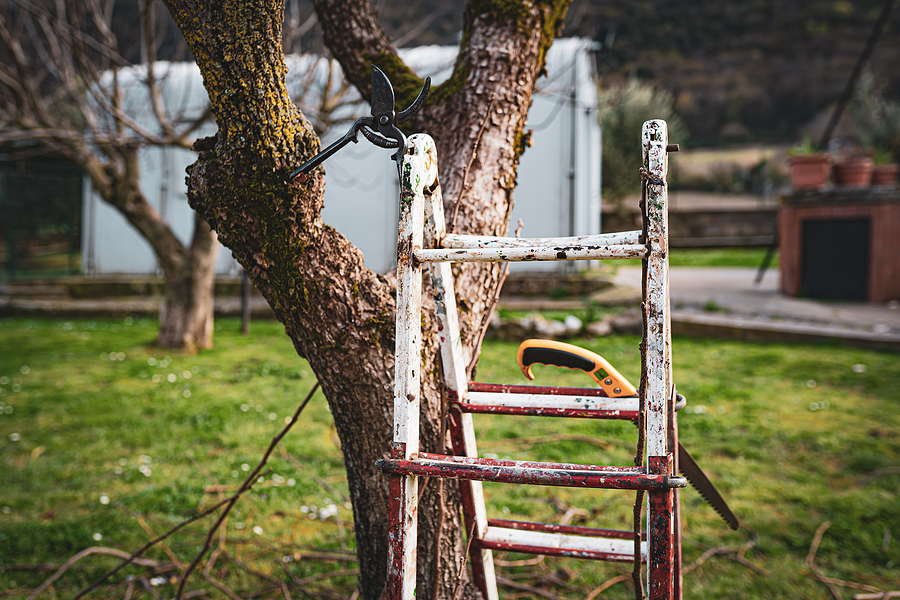Trees add beauty, shade, and value to our properties, but they can also become a homeowner’s or property manager’s nightmare when emergencies occur. From sudden storms snapping branches to unnoticed infestations weakening tree structures, tree emergencies can pose significant risks to safety and property.
In this blog, we’ll explore everything you need to know about tree emergencies, from identifying the signs early on to taking immediate steps to manage the situation and implementing long-term solutions to prevent future issues.

The Urgency of Tree Emergencies
Tree emergencies can arise suddenly or develop over time, causing potential harm to people, property, and the environment. Recognizing the symptoms and knowing how to respond quickly can mitigate the risks and damage associated with these emergencies.
Signs and Symptoms of Tree Problems
Leaning Trees
A tree that starts to lean significantly might be a sign of a serious problem. While some trees naturally grow at an angle, a sudden lean often indicates root damage or soil instability. If you notice a tree leaning more than 15 degrees from its vertical position, it’s time to call a professional arborist for an assessment.
Damaged or Hanging Branches
Branches that are cracked, split, or hanging precariously pose an immediate danger, especially during high winds or storms. Look for large branches that have broken off but are still attached to the tree, as these can fall unpredictably.
Root Issues
Exposed roots, especially those that are cracked or broken, can signal trouble. Roots anchor your tree and provide it with essential nutrients and water. Damaged roots compromise the stability of your tree, making it more susceptible to falling.
Pest Infestations
Insects such as bark beetles, termites, and emerald ash borers can infest trees and cause severe damage. Look for signs like small holes in the bark, sawdust-like material around the base, and dead or dying branches.
Wildlife Tampering
Animals like squirrels and birds can sometimes cause damage to trees by stripping bark or creating nests. While this is usually not a severe issue, in combination with other problems, it can exacerbate tree health issues.
Immediate Steps for Homeowners and Property Managers
When faced with a tree emergency, quick action can prevent further damage and ensure safety. Here’s what you should do if you encounter a tree emergency:
- Contact Professionals: The first step is to call a certified arborist or a professional tree removal service. These experts are trained to assess the situation safely and recommend the best course of action. Never attempt to handle a tree emergency on your own, especially if power lines or structures are involved.
- Secure the Area: Ensure that the affected area is cordoned off to keep people and pets safe. If possible, place warning signs to alert others of the hazard. Removing vehicles and outdoor furniture from the vicinity can also prevent additional damage.
- Document the Damage: Take photos and make notes about the emergency. This documentation can be useful when filing insurance claims or discussing the situation with professionals.
Long-Term Solutions and Preventative Measures
Preventing tree emergencies requires regular maintenance and proactive measures. Following these tips can help keep your trees healthy and reduce the risk of future problems:
Regular Pruning: Pruning helps remove dead or weakened branches, promoting healthy growth and reducing the risk of branches breaking during storms. It’s best to hire a professional tree care operator to prune your trees every 2-3 years.
Routine Inspections: Schedule annual inspections with a certified arborist to check for signs of disease, pest infestations, and structural issues. Early detection can prevent minor problems from escalating into emergencies.
Proper Watering and Fertilization: Ensure your trees receive adequate water and nutrients. Overwatering or underwatering can weaken roots, and poor soil quality can stunt growth. Use mulch to retain moisture and apply a balanced fertilizer annually.
Install Support Systems: For trees with heavy branches or those prone to leaning, installing support systems like cables and braces can provide additional stability. This is especially important for older trees or those exposed to strong winds.
Monitor for Pests: Keep an eye out for signs of pests and address infestations promptly. Using environmentally friendly pest control methods can protect your trees without harming beneficial insects or the surrounding ecosystem.
Conclusion
Tree emergencies can pose serious risks to safety and property, but by recognizing the signs early and taking immediate action, you can mitigate the damage. Regular maintenance and preventative measures are key to ensuring your trees remain healthy and stable.
Don’t wait for an emergency to strike—assess your property today and consult with a certified arborist to identify potential hazards. By staying proactive, you can enjoy the beauty and benefits of your trees without the worry of unexpected emergencies.
Remember, it’s always better to be proactive and take preventative measures rather than waiting for an emergency to arise before seeking help. Contact Timberland Tree Care at 317-348-0811 for licensed and insured tree services in Indianapolis, Indiana. We serve residential and commercial customers.
Related Posts:
When Nature Strikes: How to Deal with a Fallen Tree on Your Property
Hidden Dangers in Your Yard: Identifying and Managing Hazardous Trees
5 Easy Steps to Take After Stormy Weather Damages Your Trees









